The Royal Navy has carried out its first live firing of the Naval Strike Missile (NSM) from a British warship during Exercise Aegir 25 at the Andøya range in northern Norway.
The test was conducted alongside NATO allies Norway and Poland, according to the Ministry of Defence.
Frigate HMS Somerset launched the 400 kg missile, which is designed by Kongsberg Defence & Aerospace. The NSM is an anti-ship and land-attack cruise missile that replaces the Royal Navy’s ageing Harpoon system currently fitted to Type 23 frigates and Type 45 destroyers.
The missile has an operational range of more than 200 km, with later variants reaching beyond 300 km. It uses GPS-aided inertial navigation, a laser altimeter, terrain contour matching and an imaging infrared seeker for terminal guidance. The system weighs 400 kg with booster, carries a 120 kg titanium-cased blast and fragmentation warhead, and flies at sea-skimming altitude at speeds up to Mach 0.93.
Kongsberg states that the NSM is already in service with Norway, Poland, the United States, Germany and several other countries, with production continuing for new customers including the UK.
The United Kingdom is in the process of equipping its surface fleet with the Naval Strike Missile, with a total of 11 vessels scheduled to receive the system. The rollout covers ships drawn from both the Type 23 frigate class and the Type 45 destroyer class.


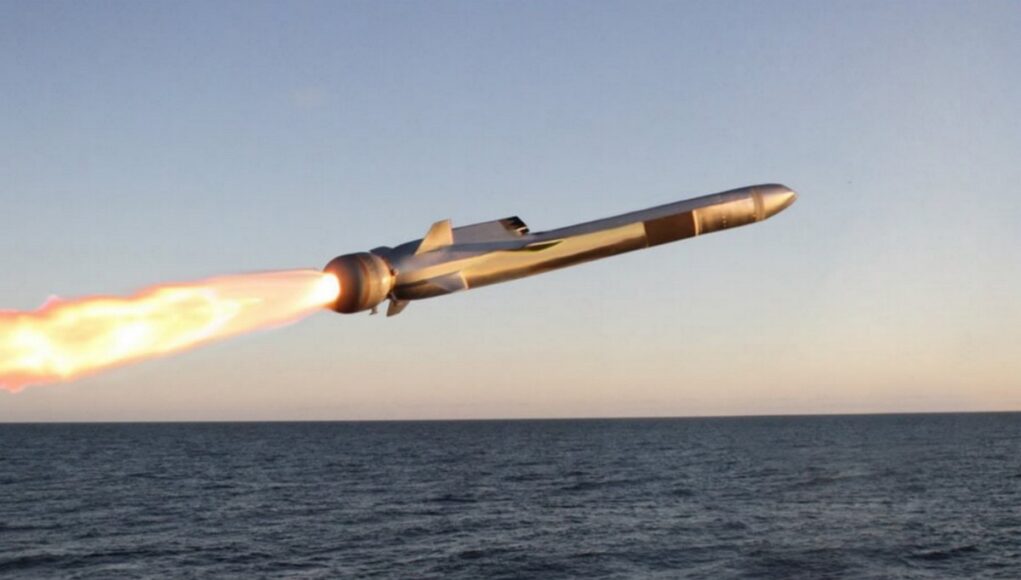
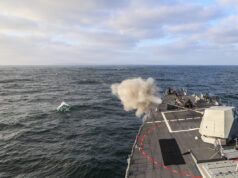
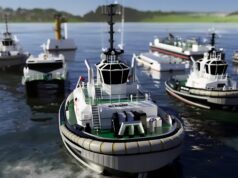

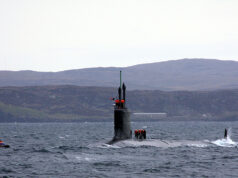
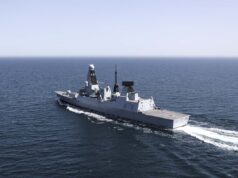

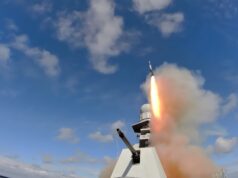
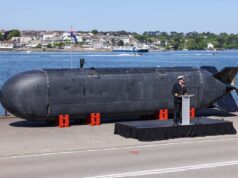
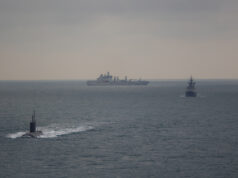
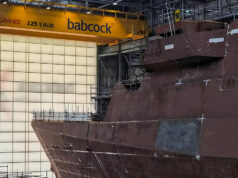

With so few frigates and destroyers in the fleet it seems more than stupid that we can’t equip all of them with NSM. The Anglo-French replacement is still years away so we are going to need these on T26 & T31 too.
Agree. Also the NSM can be fitted into Mk41 vls so that’s another bonus. I’d like to see the entirety of the frigate and destroyer fleet fitted for NSM too. It offers some useful punch to the RN.
Other options are LRASM and/ or a storm shadow derivative.
Purchasing just 11 NSM sets of 8 missiles each was really the bare minimum. It’s worth considering though that upto now no surface warships have engaged another with ship to ship missiles. Most combat has been air launched or submarine Vs surface ship. The NSMs range means a warship has to get relatively close to its enemy to launch it.
Ship to ship engagements have been conducted with Styx missiles. Those fired from Egyptian Komar class ships sunk the Israeli destroyer Eilat. The Indian Navy also used them against Pakistani ships in their 1971 war. Three sank and one was badly damaged.
The NSM were bought as an interim solution until something better comes along. The 11 are for 6 x T45 and 5 x T31, with T23 taking them until T31 is ready.
If/when T31s get Mk41, they could be used for a few more NSM, but I’m guessing more likely they’ll get loaded up with sea ceptor.
If they sink the ships they’re pointed at why wait for something better to come along? I’m with Rob, stick them on anything that floats!
The vertically launched variant is JSM, which can also be launched externally from F35B (wink wink!). We have mk41 launched STRATUS coming down the line, which will be a longer ranged and/or faster option for proper surface to surface combat in place of anti-corvette stuff.
Actually a couple of Egyptian missile boats fired a total of 4 Styx missiles at the Israeli destroyer Eilat (ex HMS Zealous) on October 21, 1967. Eilat was hit 3 times, sinking her with many of her crew killed or injured. It was the first ship to ship missile strike, I believe. At least one of the missile boats fired from with in the habour limits of Part Said while the second may have been at sea.
Cheers CR
If you look at Operation Mantis (1988) several harpoons were fired from US ships at various Iranian surface targets.
I believe in the first engagement the wainwrights group used standard missiles to mission/mobility an kill the Iranian missile boat, the Bagley then fired a harpoon as a sink shot..but the harpoon missed I believe..that ship was finished with guns.
Second shot an Iranian frigate engaged US air with a SAM the air fired 2 harpoons and a number of AGM-123 Skipper II bombs..the USS Strauss (DDG-16) that was close added a ship launched harpoon to the medley. It’s believed all 3 harpoons and the skipper bombs hit…I believe this is the only recorded major surface combatant to major surface combatant heavyweight anti ship missile strike. All others have been small missile boats vs major surface combatants or Air vs surface vessel.
Isn’t the Harpoon missing the story where it flew directly through a hole in the superstructure caused by a previous missile attack without detonating?
There was one major surface combatant to major surface combatant.. but is was an assistance to air ( 2 harpoons and a load of guided bombs vs 1 from a ship).. there have also been a handful of missile boat vs major surface combatant engagements.. but the massive preponderance have been air to surface combanants.. with the RN having mission/mobility or sunk the most by a long way ( sea skua by surface vessels destroyed in war is the most effective anti ship missile on record). Submarine post war has been vanishingly small as well with only two kills.
So by numbers it’s with anti ship missiles or torpedoes it’s
Air attack vs surface vessels 10s of vessels destroyed, ( the RN has done about 20 of these)
Major surface combatant vs missile boat about 4 engagements
Submarines vs surface vessels 2 engagements
Major surface combatants vs major surface combatant’s 1 engagement
The risk is massively swayed towards air attack by a very large margin.
I think 11 is all of the T23s and T45s. Everything from here is likely to be vericle launch using the Mk 41 system.
💯
I suspect the T31 will get them.. that fact they ordered the exact number for T45 and T31 suggests they are.. the simple fact is the T23s will be gone by 2030 in all likelihood.. so they are not buying 5 whole missile systems and dumping them after 5 years.. they will be put on the type 31s. After all the RJ10 Antiship missile is not likely to be operational until the early 2030s so you are looking at the mid to late 2030s before all RN escorts are equipped with it. Even then the RN will probably keep it mounded on the T31s it’s not going to waste perfectly good and expensive strike missiles.
Would it not be an equally valid proposition to equip 5 of the 8 higher value T-26 w/ NSM. Reasonably certain UK would receive mate’s rates on any additional NSM purchases, in exchange for a small discount on Norway’s T-26 acquisition. Trade, despite The Donald’s self-proclaimed economic mantra, is generally a two-way proposition. 🤔
The Norway T26 deal has a full industrial off set for 10 billion so the UK does need to buy a lot of stuff from
Norway…
As it stands 11 isn’t far off the full fleet, most of the t23 are either getting ready to be scrapped or alongside waiting for the decision to do so.
Well it is a step in the right direction… I recall seeing T23s shadowing Russian ships with no ASMs at all just a gun.that was shameful for the RN and UK.
Not really in the Channel the distances would favour the 4.5” gun.
Different arithmetic in the open sea.
I think it’s more psychological. Even the Russians wouldn’t be dumb enough to start a shooting war in the Channel with NATO surrounding them. It’s more that Russia sees RN ships sailing around with no ASM and thinks (not unjustly until quite recently) that we aren’t serious about defending ourselves or NATO. A feeling that they can act with impinity is kind of what drove them into choosing to invade Ukraine.
I agree – the Russian understanding is so defective that they are just playing top trumps with systems and missiles.
Hi, was not thinking of the channel I was thinking of Scotland.
Err… Sea Ceptor… That M3 plus missile also has a surface engagement capability out to about 25km….a M3 high diver has a. Lot of kinetic energy to go with its blast frag warhead…
Yes but the warhead is small and I doubt it would be much use against a major Russian ship.
Don’t call it a surface fleet, it’s not big enough to be a fleet. And we have a mach1 missile while the Russians with a smaller economy and apparently on their uppers manage what mach 7 or so? We are not just behind now but we are a laughing stock.
Mind you, I am very very surprised we could afford to launch one and that we could manage to persuade the civil service to allow us to spend such a vast amount of money. What happened to our lasers?
Hi Dave.
I don’t think the RN’s kit is a laughing stock at all by international standards.
Sonar 2087, 2076, Trident, Spearfish, Sea Viper/T45, T26, F35, Astute SSNs, CAMM, Merlin, the Corps of RM, the SBS, the training that FOST provide that other nations want to attend, what a shambles the naval service is compared to…who? Russia, USA, China? The other navies of South America, Africa, and Asia?
And backed up by an ISTAR network that other nations can only dream about.
Our issue is mass, not individual capability of the assets that we have.
Is Mach speed that important regards ASM as long as they work and are accurate? Russian Mach 7 missiles also have to find their target on the open ocean first, so Russian missiles can go as fast as they like, the kill chain still needs to work.
And if the Bears and surveillance satellites are negated, how do they target?
To be fair to Russia, missiles is one area they have always placed great emphasis on, along with their Submarines. They had to, with NATO and the USN against them.
I also don’t think RN escorts will be sailing up and down alone in the Barents and Norwegian seas in a hot war exchanging pot shots with Russian escorts like salvos at Jutland, and waiting to get targeted, that is not I understand how our or NATO maritime doctrine works re our surface ships.
The Russian ships will be in their bastions ,or already sunk by maritime airpower which would hit them on the Kola or in the White sea, as long as the US CBGs turn up, and I understand that was also one of the RN carrier roles in the 70s, striking the Russians in their back yard.
The Russian fleets are also, apart from the Northern Fleet, constrained by geography. The Baltic is a NATO lake, how would their fleet leave it? Same with the Black Sea fleet, do they even still have one after Ukraine has targeted it? Their Pacific fleet is likewise constrained in Vladivostok by South Korea and Japan, unless they use Petropavlovsk up in Kamchatkha which is primarily for subs and which I believe is also ice bound for much of the year.
Finally, our escorts do not have a tug to accompany them in case they break down!
Agreed, also I believe the NSM is a low observable missile and given how effective subsonic weapons like Storm Shadow have been against Russia in Ukraine the NSM would have a decent chance at getting through Russian AD. Main issue is the lack of range. Think the American low observable LRASM has a range over 1000 km and much bigger warhead….lot more expensive though.
I wasn’t aware it was a bit short legged, not my area. I see it primarily for its Land Attack capability rather than the AS side. I’ve also suggested before that fast jets should be the primary carrier of ASM, not our escorts, and buying one for Typhoon and F35 a priority.
Why risk an Escort to close into range over a fast jet.
It’s vitally important that our ships have a decent offensive missile that is dual role, i.e. Anti-ship as well as land attack. Predominantly I’d bet that the missile would be used almost exclusively for land attack. But there’s always that 1 to 5% chance that it will be needed against other ships. This becomes significantly more important when operating way beyond the range of the RAF or even carrier based aircraft, or there a critical time on target requirement.
But totally agree that the Typhoon, F35 and P8 should be integrated with such a weapon.
We don’t have the mass, as I said not a fleet. Our missiles may work (though the various sinkex seems to show otherwise when ships with no power, no pumps, all water tight doors open, no fire control, no operating defences take so much effort to sink) but each ship carries so few and with so few ships we literally can’t sink the russian navy with a 100percent kill rate. We have seen that the Russians are happy to use quantity and plough on through any amount of losses, something we just can’t compete with in our current situation. Then if course there is China, possibly Argentina, heaven only knows but today it could even be the USA on the other side
The difference is the RN has proven defensive measures on their ships, whilst russian vessels have proven not to work ones. Russian navy is no threat to the RN. Their fleet has been wiped out by Ukraine which is a nation without a fleet.
All true but underestimate your enemy at your peril!
I think that is why they upgraded from harpoon. I can’t help thinking harpoon would do just fine after the russian fleet as the Neptune missile was basically a simplified version of it. However now with NSM and the 6th astute in the water the RN is in a strong place to counter russian. My concerns are more air defences, if Russia ever thought we crossed the line in Ukraine and got desperate they could send some drones at major infrastructure in a denialable attack, and we have nothing really to stop it.
In a peacetime environment, you really don’t want to slinging Harpoons at targets, especially if they are over the horizon. The radar on them is quite rudimentary and can either be jammed or spoofed. So if a targeted ship launches a few clouds of chaff to divert the missile. The proximity fuse may or may not get a decent return to initiate the warhead. Otherwise the missile will fly through the chaff cloud and look for another target. If this is a neutral cargo ship or even a cruise ship, it won’t care and just see a big juicy radar target and head for it. Harpoon is more suited for a traditional conflict, where you’d like to think neutral shipping is avoiding that area.
NSM, is a lot more suited for today’s peacetime rules of engagement. As the IR seeker has a very good image quality, that can pick out key identification details of a ship. Then compare that to the target library stored in the missile’s memory, to make sure it is the correct target. It is very hard to jam or decoy. But if it is, the operator via data-link can see what the missile is targeting and can either make it search for the original target or make it crash into a safe area.
Ukraine’s use of small drones launched from the back of trucks is the stuff of nightmares. However, the genie is now out of the bottle and more Countries will look at Ukraine’s attacks in Russia and see it as a viable method to do strategic attacks on their enemy.
There are so many critical infrastructure or key political institutions that could be targeted, where do you start first? What would the priority list look like? Currently, there are hand held or static jammers that could be used to take out FPV type suicide drones. But the ones that fly at a fixed coordinate, require more to stop them. We could jam GPS within a small area, but then that would affect so many other people who use it day to day. The likes of Starstreak or Martlet have demonstrated that they can be used against drones, but they’re not great for dealing with a swarm and are quite expensive per shot. The best option would be using directed energy weapons such as laser or RF (Microwave). As they are much cheaper to use per shot and have a fairly unlimited magazine depth (if you can keep them powered!).
The number required would be in the hundreds. For example every power station, airport, port, oil/gas storage facilities, military base, hospital, seat of government etc etc. Not to mention the legal ramifications of firing a high powered laser at a drone that is on the flight path to an airport.
Wasn’t just Ukraine, look at how Israel neutralised Iranian air defences, using forward placed drones and missiles within Iran. It’s the future of warfare and it’s the denialable nature that concerns me. Very much like a kinetic version of the many cyber attacks there have been where everyone knows its a state actor but can’t prove it.
I cant see a realistic scenario where we go head to head with Russia, but I can see black ops stuff happening.